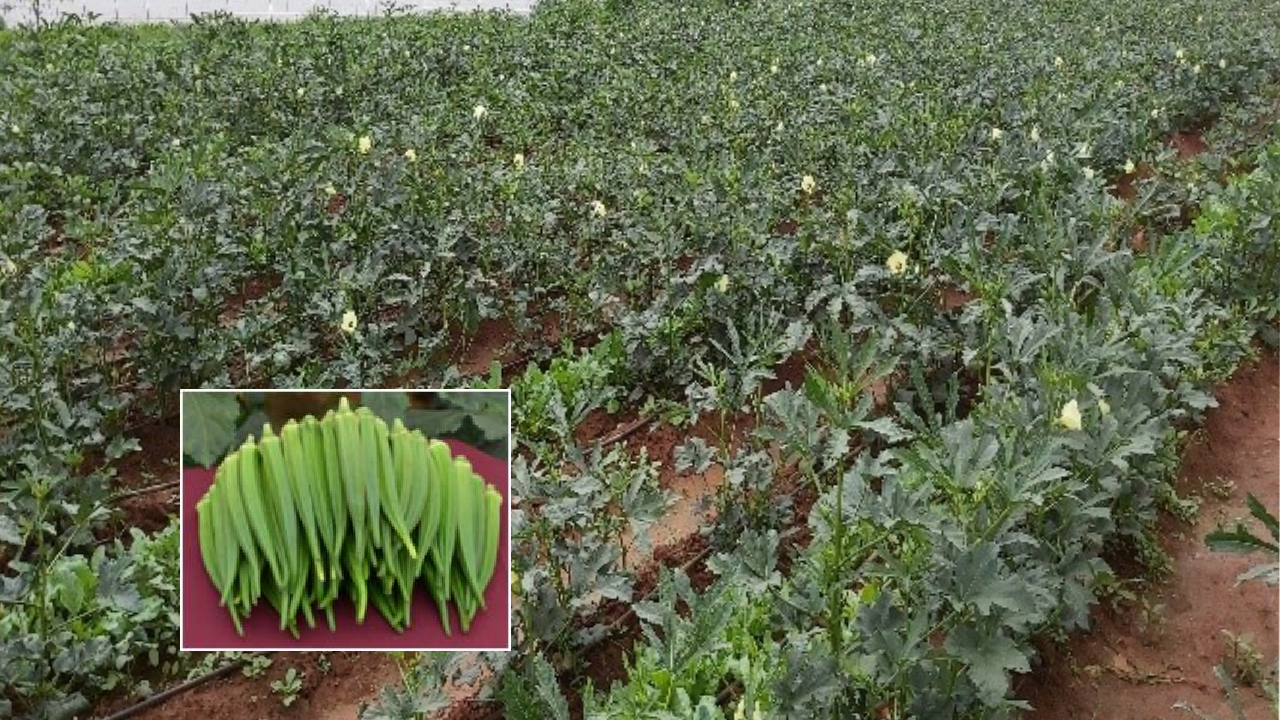
Arka Nikita represents a significant advancement in okra cultivation, blending modern agricultural technology with traditional farming practices. As a cutting-edge F1 hybrid, Arka Nikita stands out for its exceptional attributes, including high yield, disease resistance, and adaptability across different seasons and regions. This hybrid is the first commercial GMS-based F1 hybrid developed by public institutions in both India and the world.
Key Characteristics of Arka Nikita
-
High Yield Potential: Arka Nikita offers an impressive yield range of 21-24 tons per hectare. This high productivity makes it a valuable choice for farmers aiming to maximize their harvest and profitability.
-
Fruit Quality: The hybrid produces dark green, smooth fruits with five ridges. These characteristics not only enhance the visual appeal of the okra but also make harvesting easier and more efficient. The tender texture of the fruits adds to their market value.
-
Adaptability: Arka Nikita is well-suited to a variety of growing conditions and can be cultivated in both the kharif (monsoon) and rabi (winter) seasons. It is adaptable to key okra-growing regions across India, including Karnataka, Andhra Pradesh, Bihar, Orissa, West Bengal, Tamil Nadu, Haryana, Maharashtra, and the Andaman and Nicobar Islands.
-
Disease Tolerance: This hybrid is specifically designed to be tolerant to Yellow Vein Mosaic Virus (YVMV), a common and damaging disease affecting okra crops. Its resilience to this virus helps ensure a healthier and more reliable crop.
Cultivation Practices for Arka Nikita
-
Soil Type: Arka Nikita thrives in a range of soil types, from sandy to clay soils, but prefers light, well-drained, and rich loamy soils. A pH level of 6.0-6.8 is ideal for optimal growth.
-
Land Preparation: To prepare the soil, perform 2-3 rounds of plowing and harrowing to achieve a fine tilth. Incorporate 25 tonnes of well-rotted farmyard manure (FYM) per hectare to improve soil texture and aeration. Create ridges and furrows spaced 60 cm apart for the kharif season and 45 cm apart for the summer season.
-
Spacing: For branching types, a planting distance of 60 cm × 30 cm is recommended, accommodating 55,000 plants per hectare. For non-branching types, use a spacing of 45 cm × 30 cm, accommodating 75,000 plants per hectare. During the spring-summer season, reduce spacing to 45 cm × 30 cm if plant growth is less.
-
Seed Rate: Use approximately 6.5 kg of seeds per hectare. A higher seed rate may be beneficial for early summer crops to compensate for potential germination losses due to temperature.
-
Sowing Methods: Direct sowing of seeds is preferred over transplanting. Sow seeds using a seed drill, hand dibbling, or behind the plough. Avoid broadcasting to minimize seed rate and facilitate better cultural operations and harvesting. Seed treatment with protective agents can improve germination and yield.
-
Irrigation: Lightly irrigate the furrows immediately after sowing to ensure good germination. Follow with regular irrigation every 3-4 days, adjusting based on soil and weather conditions. In hot temperatures around 40°C, frequent light irrigation is recommended to support proper fruiting. Drip irrigation can save about 35% of water and helps maintain soil moisture.
Fertilization:
-
Pre-Sowing: Incorporate 25 tonnes of FYM per hectare before sowing. Apply a balanced fertilizer mix with 50% of the nitrogen, full doses of phosphorus, and potassium into the sowing furrows, cover with soil, and irrigate.
-
Top Dressing: Apply the remaining 50% of nitrogen 30 days after sowing at the base of each channel, followed by earthing up.
Integrated Pest and Disease Management
-
Manage aphids, jassids, and whiteflies using confidor.
-
For shoot and fruit borers, apply coragen with a sticker like sandovit.
-
Drench the soil with bavistin.
-
Use maize or sorghum as trap crops, yellow sticky traps for whiteflies, and bird perches to encourage natural pest control.
-
Install pheromone traps to monitor and control pest populations.
-
Spray organic extracts of garlic, chili, and ginger to manage pests like aphids and jassids.
Harvesting
-
Begin harvesting 50-55 days after sowing. For tender fruits, harvest every 2-3 days. Continue harvesting up to 70-75 days after flowering.
-
Use cheap hand gloves or cloth bags to protect fingers during harvesting. Prefer morning harvesting for distant markets and evening harvesting for local markets.
Post-Harvest Management
For processing and export, sort fruits to 6-8 cm length. For local markets, cool fruits before packing in jute bags or baskets. Use perforated cartons for export and transport in refrigerated vans.
(Source: Mottaiyan Pitchaimuthu (Principal Scientist), Division of Vegetable crops, Indian Institute of Horticultural Research, Indian Horticulture, November–December 2020, 37-39)
















